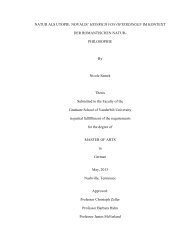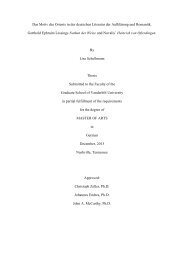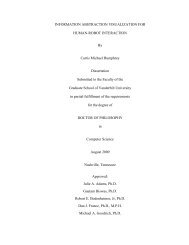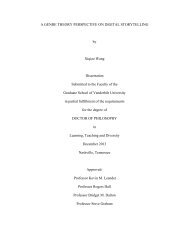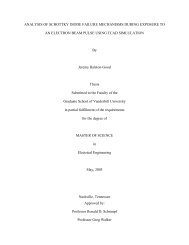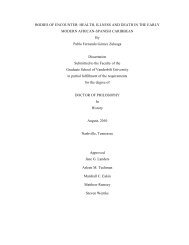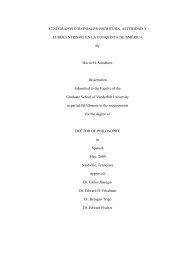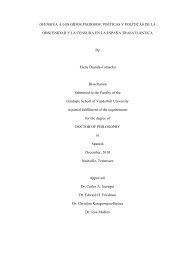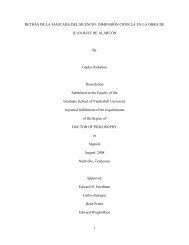EVIDENCE OF ACCRETION-GENERATED X-RAYS IN THE YOUNG ...
EVIDENCE OF ACCRETION-GENERATED X-RAYS IN THE YOUNG ...
EVIDENCE OF ACCRETION-GENERATED X-RAYS IN THE YOUNG ...
Create successful ePaper yourself
Turn your PDF publications into a flip-book with our unique Google optimized e-Paper software.
3.2.1 The High Resolution Mirror Assembly<br />
The Chandra X-ray Observatory’s telescope consists of four pairs of nested iridium-<br />
coated mirrors (Fig. 10) known as the High Resolution Mirror Assembly (HRMA).<br />
The mirrors of an X-ray telescope are cylindrical in shape, and Chandra’s mirrors<br />
have diameters that range from 0.65 to 1.23 meters. A spherical mirror, such as<br />
that found in an optical telescope, would be unable to reflect and focus X-ray pho-<br />
tons since X-ray wavelengths are on the order of the size of the atomic/molecular<br />
spacing of the material that makes up the mirror; i.e., the photons would typically<br />
pass through the mirror. To overcome this problem, mirrors make use of “grazing<br />
incidence” in which the surfaces of the mirrors are nearly (within a couple of degrees<br />
of) parallel to the path of the incoming X-ray photons. The photons are first in-<br />
tercepted by four nested mirrors that have a slight parabolic curvature. Afterwards,<br />
the photons are intercepted by a second set of mirrors, located behind the first set,<br />
which have a slight hyperbolic curvature. In e↵ect, these mirrors gradually alter the<br />
trajectory of the photons, requiring the telescope to have a long focal length. As a<br />
result, the detectors have to be placed a large distance from the mirror assembly –<br />
the distance from the Central Aperture Plate (CAP), which separates the parabolic<br />
and hyperbolic mirrors of Chandra, to the focal point of the HRMA is 10.23 meters.<br />
As with all telescopes, light gathering power and resolution are two of the major<br />
design concerns. How e↵ectively the mirrors are able to reflect and focus incoming X-<br />
ray photons depends on the incoming X-ray photon energy as well as the grazing angle<br />
of the mirrors. Due to the cylindrical shape of Chandra’s mirrors, the overall e↵ective<br />
35



